![]()
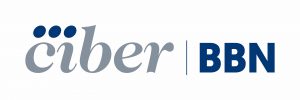
U6. Preparation and characterization of nano- and microstructured molecular soft materials – Soft Materials Service
FOR THOSE SERVICES IDENTIFIED AS OUTSTANDING, AT LEAST 20% OF THEIR CAPACITY IS OPEN UNDER COMPETITIVE ACCESS. SEE ANNEX 1 OF ACCESS PROTOCOL FOR DETAILS ON % OF OPENNESS FOR EACH SERVICE
29 May Join NANBIOSIS and IESMAT on June 10 for a seminar on microcalorimetry with live demos and expert insights at ICMAB & online. Date: Tuesday, 10 June 2025Time: 9:30 AM – 12:00 PMLocation: Sala d’Actes Carles Miravitlles, ICMAB-CSIC & OnlineOrganized by: Unit 6 of NANBIOSIS (U6 Preparation and characterization of nano- and microstructured molecular soft materials – Soft Materials Service)In collaboration with: IESMAT Barcelona, june 2025. NANBIOSIS Unit 6 is pleased to invite researchers, professionals, and students to the upcoming Technical Seminar on Isothermal Valoration Microcalorimetry, organized in collaboration with IESMAT and hosted at the Institute of Materials Science of Barcelona[...] 23 May “Fabry Connections” united patients, researchers, and clinicians at ICMAB to advance Fabry disease care and nanomedicine-based therapies. Barcelona, april 2025. On Tuesday, 29 April 2025, the Institute of Materials Science of Barcelona (ICMAB, CSIC) hosted the event “Fabry Connections: Science, Patients, and Future”, bringing together around 50 participants including researchers, clinicians, patients, and patient association representatives. The event aimed to create a multidisciplinary platform for sharing knowledge and advancing the future of Fabry disease research and treatment. Attendees at the Fabry Connections event at ICMAB | ICMAB-CSIC As we announced back in february 28, this special event was held within Fabry Diseas[...] 28 Mar Technical Seminar on Materials Characterization by NANBIOSIS Unit 6 & NANE on April 1, 2025, at ICMAB-CSIC. Hands-on training & latest techniques. Register now! Barcelona, march 2025. The Soft Materials Lab – NANBIOSIS Unit 6, in collaboration with NANE, is pleased to invite researchers, professionals, and students to a Technical Seminar on Materials Characterization. The event will take place on Tuesday, April 1st, 2025, from 9:30 AM to 5:00 PM at the Institute of Materials Science of Barcelona (ICMAB-CSIC). This seminar will provide attendees with an opportunity to explore the latest advancements in particle size analysis techniques and gain hands-on[...] 25 Mar A new TPU surface modification with an antimicrobial protein prevents biofilm formation in implants, offering an alternative to antibiotics and metal coatings. Barcelona, february 2025. Infections associated with medical implants are a serious health issue. A new study presents a chemical modification of thermoplastic polyurethane (TPU) with an antimicrobial protein that reduces the formation of biofilms of multidrug-resistant bacteria, offering an alternative to antibiotics and metal coatings in these devices. A team of researchers has developed a new strategy to chemically modify TPU, a material widely used in medical devices, to endow it with antibacterial properties and prevent infections associated[...] 28 Feb Join us on April 29 at ICMAB for “Fabry Connections” to explore research, patient insights, and future challenges in Fabry disease. Register now! Barcelona, february 2025. Today, February 28, World Rare Disease Day, NANBIOSIS reaffirms its commitment to advancing research and raising awareness of rare diseases such as Fabry disease. In this context, we are pleased to invite researchers, healthcare professionals, patient associations, and individuals affected by Fabry disease to the event “Fabry Connections: Science, Patients, and Future”, which will take place on Tuesday, April 29, 2025, at the ICMAB-CSIC. This event is organized by our Unit 6, Biomaterial Processing[...] 05 Feb Misfolded ApoB100 in LDL promotes plaque buildup in familial hypercholesterolemia, raising cardiovascular risk. Structural preservation may aid prevention. Barcelona, febrero 2025. As recently published in the ICMAB webpage, a new study links ApoB100 protein structure (a key protein found in low-density lipoprotein, LDL, often called “bad cholesterol”) to increased cardiovascular risk in familial hypercholesterolemia. The study, led by IIBB-CSIC and CIBER, with the contribution of ICMAB’s SOFT Service (with NANBIOSIS Unit 6 at its core), shows that the protein structure directly contributes to an increased tendency to aggregate and form atherosclerotic plaques in patients with familial hypercholesterolemia. In these patients,[...] 29 Jan Fabry disease therapy nanoGLA, developed by NANBIOSIS and our partners, shows superior efficacy in preclinical trials, targeting systemic and brain symptoms. Barcelona, january 2025. An international research team led by the Institute of Materials Science of Barcelona (ICMAB-CSIC) and CIBER-BBN, in collaboration with the Institute of Advanced Chemistry of Catalonia (IQAC-CSIC), has developed a groundbreaking nanotechnology-based therapy called nanoGLA for the treatment of Fabry disease. The innovative solution has shown remarkable efficacy in preclinical studies and has been published in the open-access journal Science Advances (see below for reference links). What is Fabry disease? Fabry disease is a rare genetic[...] 23 Oct José Amable Bernabé, Technical Coordinator of Unit 6, hosted a course on “Characterization techniques for particulate materials”. Barcelona, october 2024. For yet another year, José Amable Bernabé, of the Soft Materials Service at ICMAB and Technical Coordinator of NANBIOSIS Unit 6, offered this course. The course was an explanation of different techniques to characterize nanoparticles and particulate matter, including the fundamentals of these techniques, sample preparation, practical examples and results interpretation. The course is offered every year through the CSIC training courses offered every year for all its staff, as reported in ICMAB webpage. Soft Materials Service The Soft Materials Service provides[...]Description
Services
Equipments
Active projects
Title
Fundin: Organism
Call: Funding source
Role
GA: 720942

SMART FUNCTIONAL GLA-NANOFORMULATION FOR FABRY DISEASE – Smart-4-Fabry
Unión Europea (Comisión Europea)
H2020-NMBP-2016-2017
Coordinator
SAF2017-90810-REDI

Strategic Promotion and coordinated management of Nanbiosis: Pronanbiosis II
Agencia Estatal de Investigación (AEI)
Acciones de dinamización «REDES DE EXCELENCIA»
-ICTS 2017Coordinator
Other projects
Ref
Title
Funding Organism
Unit Role
PI15/00272
Design of intelligent nanoconjugates for the treatment of metastatic colorectal cancer.
Instituto de Salud Carlos III
Participant
H2020-MSCA-ITN-2014-642196
Integrated self-assembled SWITCHable systems and materials: towards responsive organic electronics - a multi-site innovative training action i-Switch
Unión Europea H2020
Participant
2014 SGR 17
Consolidation Research Group: Molecular Nanociènciai Materials Orgànics (NANOMOL)
Generalitat de Catalunya
Participant
CTQ2013-40480-R
Molecular Bio- and Electro-active materials for the improvement of health and social well-being (Be-Well)
MICINN
Participant
FP7-PEOPLE-2013-ITN nº 607721
Nanochemistry of molecular materials for 2-photon functional applications. Nano2Fun
Unión Europea
Participant
MAT2013-50036-EXP
Cell Surface Vessel Engineering Using Dynamic Molecular Bioinfecting (DYNAMO)
MINECO
Participant
RTC-2016-4567-1
Nanocapsules containing active ingredients for the topical treatment of dermatological diseases (NANO4DERM)
MINECO
Participant
RTC-2014-2183-S
Application of Quatsomes technology for the development of a new range of perfumed softeners with lower environmental impact
MINECO
Participant
201260E080
Self-assembly, Nanostructuring and Processing of Functional Organic Molecules and their Applications
Ministerio de Ciencia e Innovación
Participant
MAT2016-80826-R
Molecular materials and supramolecular organizations for therapy, diagnosis and tissue engineering (MOTHER)
MINECO
Participant
RTC-2014-2207-1
TERARMET: Development of therapies for the treatment of rare congenital metabolic diseases
MINECO
Participant
Publications
News U6
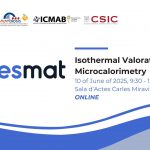
NANBIOSIS U6 organizes a seminar on Isothermal Titration Microcalorimetry in collaboration with IESMAT
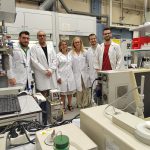
Event recap: “Fabry Connections” brings together science and patients at ICMAB
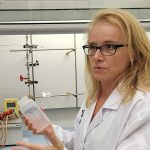
New hands-on material characterization seminar by NANBIOSIS experts and NANE

New breakthrough in preventing infections in biomedical implants

Awareness and research on Fabry Disease with a special event at ICMAB
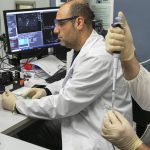
New Consequences in Familial Hypercholesterolemia due to Abnormal LDL
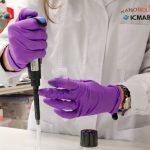
A Breakthrough Therapy for Fabry Disease: nanoGLA Demonstrates Promising Results
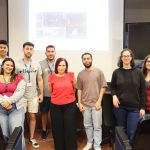
The Soft Lab held a new edition of the course on characterization and preparation of particulate materials